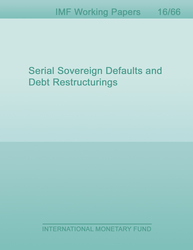
Serial Sovereign Defaults and Debt Restructurings
Emerging countries that have defaulted on their debt repayment obligations in the past are more likely to default again in the future than are non-defaulters even with the same external debt-to-GDP ratio. These countries actually have repeated defaults or restructurings in short periods. This paper explains these stylized facts within a dynamic stochastic general equilibrium framework by explicitly modeling renegotiations between a defaulting country and its creditors. The quantitative analysis of the model reveals that the equilibrium probability of default for a given debt-to-GDP level is weakly increasing with the number of past defaults. The model also accords with an additional fact: lower recovery rates (high NPV haircuts) are associated with increases in spreads at renegotiation.
Publication date: March 2016
ISBN: 9781513596648
$18.00
Add to Cart by clicking price of the language and format you'd like to purchase
Available Languages and Formats
| English |
Prices in red indicate formats that are not yet available but are forthcoming.
Topics covered in this book
This title contains information about the following subjects.
Click on a subject if you would like to see other titles with the same subjects.
Economics- Macroeconomics , Economics / General , International - Economics , Serial Default , Sovereign Default , Past Credit History , Haircuts , Recovery rates , Risk Premia , debt , default , defaults , return , defaulters , International Lending and Debt Problems , Open Economy Macroeconomics , All Countries
Summary
Copyright © 2010 - 2024
Powered by:
AIDC



